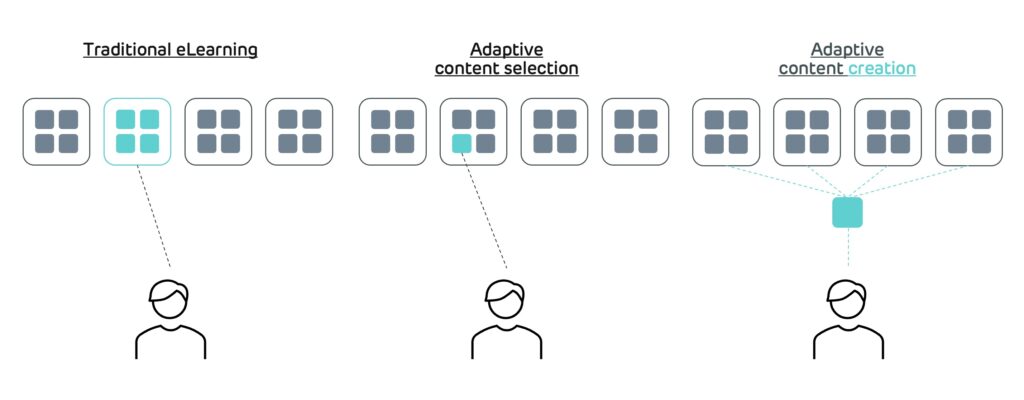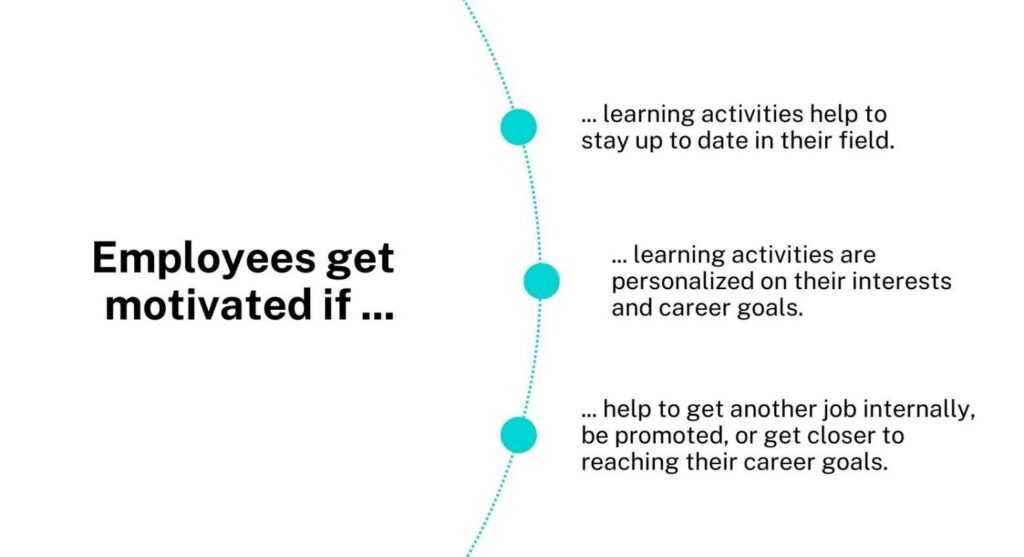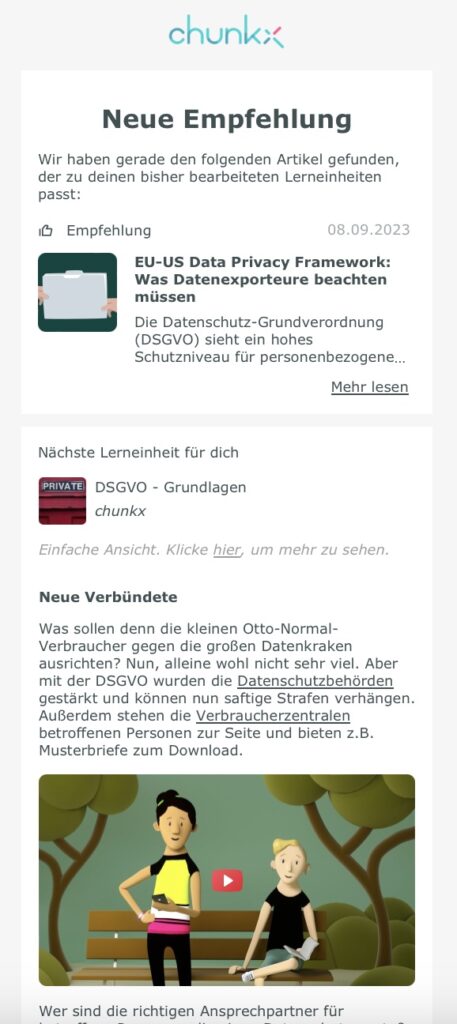What does adaptive learning really mean?
Adaptive learning refers to learning approaches that adapt to the individual needs of learners. Traditionally, it means that learning content is presented in a different order or depth based on user behavior, preferences or performance. But is this sufficient if the pool of available content is not suitable enough? Or if suitable content is embedded in long videos and you don’t want to present learners with 20 minutes of video when only 3 minutes are actually relevant? The requirements of companies and the technical possibilities of start-ups such as chunkx call for a new understanding of adaptive learning.
The first wave: Adaptive content selection
Most adaptive learning solutions available on the market are based on the principle of adaptive content selection. This involves:
- Existing learning materials presented in different order
- Learning paths adapted based on user behavior
- Content selected from a fixed catalog according to the user’s performance
This approach is similar to an experienced waiter recommending dishes from an existing menu – useful, but limited by the existing offer.
The revolution: Adaptive content creation
At chunkx, we have gone a decisive step further and made the transition from mere adaptive content selection to adaptive content creation. Our AI-powered system:
- Creates customized learning content individually for each user
- Adjusts content in real time based on direct feedback
- Develops with each user and continuously optimizes the learning materials
To stay with our gastronomy example: We are not the waiter with the existing menu – we are the personal chef who prepares each meal specifically according to your preferences and needs.

Hyper-personalized learning in practice
What does this look like in practice? Imagine an employee learning a new concept:
Immediate adaptation: The employee finds an explanation too complex and asks: “Please explain more simply”. Instead of waiting for a course update, our system immediately generates a simplified version.
Context-related examples: The request “An example from my industry, please” leads directly to the creation of relevant, industry-specific examples.
Continuous optimization: The more the user interacts with the system, the better the AI understands their preferences and automatically optimizes future content.
The measurable benefits of hyper-personalized learning
Companies that rely on adaptive content creation benefit from:
- Higher employee engagement: motivation increases thanks to relevant, customized content
- Accelerated learning progress: no time is wasted on irrelevant content
- Better knowledge retention: personalized content is better understood and retained
- Scalable individualization: Each employee receives individual learning material without increased resource expenditure
The future of adaptive learning
The transition from adaptive content selection to adaptive content creation marks a paradigm shift in digital education. At chunkx, we are convinced that the future of learning does not lie in the management of existing content, but in the dynamic creation of customized learning materials in real time.
In a working world that is increasingly characterized by specialization and rapid development, the ability to tailor knowledge precisely to the needs of the individual is becoming a decisive competitive advantage.
Want to learn more about how hyper-personalized adaptive learning can help companies transform? Talk to us!












